- Best for affordable pricing: Trello
- Best for customizations: ClickUp
- Best for writing assistance: Notion
- Best for unique AI features: Wrike
- Best for included AI features: Asana
- Best for teams of most sizes: monday.com
- Best for Microsoft 365 users: Microsoft Project
- Best for AI-enhanced automation: Zapier
- Best for AI-driven document collaboration: Coda
While AI once seemed like a fictional novelty, it’s quickly being implemented in many different project management software platforms as the field progresses.
To help you decide which software is best for your business, we’ve rounded up seven of the best AI project management tools of the year.
Top AI project management tools comparison
Besides pricing, there are multiple other factors that you need to consider when choosing between AI project management tools.
| AI writing assistance | AI task management | Forever free plan | Starting price for base plan (billed annually) | Charge for AI features | |
|---|---|---|---|---|---|
| Trello | Yes | Yes | Yes | $5 per person per month | Varies by power-up |
| ClickUp | Yes | No | Yes | $7 per person per month | $5 per person per month |
| Notion | Yes | No | Yes | $8 per user per month | $8 per person per month |
| Wrike | Yes | Yes | Yes | $9.80 per person per month | Included |
| Asana | Yes | Forthcoming | Yes | $10.99 per person per month | Included |
| monday.com | Yes | No | Yes | $8 per person per month | Included |
| Microsoft Project | Yes | Yes | No | $10 per person per month | $30 per person per month |
| Zapier | No | Yes | Yes | $19.99 per person per month | $20 per month |
| Coda | Yes | Yes | Yes | $10 per user per month | Included |
Trello: Best for affordable pricing

Trello is a project management software known for its intuitive and visually appealing kanban boards, but it’s also recently incorporated AI functionality into the platform. Trello’s Strategy AI power-up (created by Chinchilla Software) helps you cross-tag projects and tasks, get visibility into workloads and measure strategic progress. There’s also another power-up created by ChaptGPT that will provide writing assistance.
Pricing
- Free: Up to 10 boards per workspace.
- Standard: $5 per user per month if billed annually, or $6 per user per month if billed monthly.
- Premium: $10 per user per month if billed annually, or $12.50 per user per month if billed monthly.
- Enterprise: $17.50 per user per month when billed annually.
Features
- Excellent Kanban boards.
- Extremely easy-to-use automations.
- Eight project views.
- Power-ups for additional functionality.
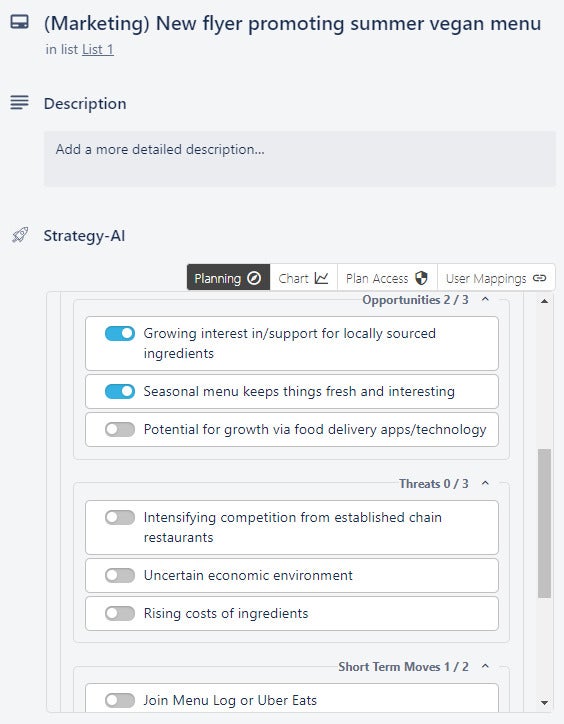
Pros
- Unlimited file storage on all plans.
- Unlimited users on the forever free plan.
- Transparent and affordable pricing plans.
- Low learning curve, even for beginners.
Cons
- Many power-ups require an additional fee.
- Free plan limited to 10 boards per workspace.
- Limited customization options.
- Reporting tools could be improved.
Top integrations
Trello’s top integrations are Slack, Google Drive, Jira, Confluence and Dropbox.
Why I chose Trello
I chose Trello primarily for its affordable pricing, which is great for teams looking for a cost-effective project management solution. Trello’s intuitive kanban boards, coupled with its recent addition of AI functionalities like the Strategy-AI Power-Up, offer a balance between simplicity and advanced project management capabilities for this visual treat of a project management tool. Compared to other products on this list, Trello provides an accessible entry point into AI-enhanced project management.
For more information, read the full Trello review.
ClickUp: Best for customizations

ClickUp offers an AI Writing Assistant add-on to its project management software that costs $5 per person per month. Right now, the Writing Assistant can be used to create prompts, summarize documents and generate subtasks to spark creativity and speed up work. Other features — such as mobile app functionality, project and standup summaries and the ability to access AI through the toolbar — are on their way.
Pricing
- Free Forever: $0 for personal use.
- Unlimited: $7 per user per month billed annually, or $10 per user per month billed monthly.
- Business: $12 per user per month billed annually, or $19 per user per month billed monthly.
- Enterprise: Quotes are available upon request.
Features
- Choose from more than 15 project views.
- Excellent customization options.
- Create documents, wikis and knowledge bases.
- More than 1,000 integrations.
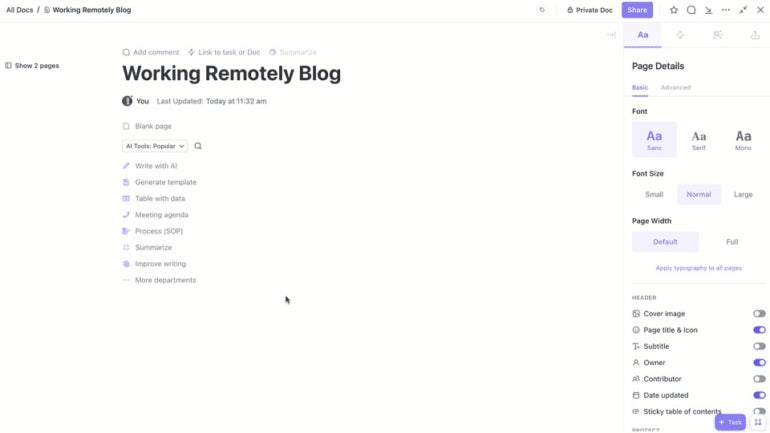
Pros
- Transparent and affordable pricing plans.
- Interface is colorful and easy to navigate.
- Free plan allows unlimited users.
- 24/7 customer support for all plans.
Cons
- Must pay extra for AI add-on.
- AI feature focused on writing only for now.
- Some users report occasional performance issues and lags.
- Must use the desktop app for a number of actions.
Top integrations
ClickUp’s top integrations are Slack, HubSpot, Google Drive, Gmail and Zoom.
Why I chose ClickUp
ClickUp was an obvious pick for me because of how widely customizable it is, as well as its innovative ClickUp Brain. ClickUp Brain offers contextual, conversational AI features that are integrated throughout the platform, providing AI tools for project management that can automate routine tasks as well as generate insights from project data.
This helps ClickUp ascend from a task manager to an AI project management software. Being able to customize ClickUp’s environment to fit my project needs — coupled with AI-driven functionalities — make it a no-brainer for teams looking for customization and smart project management solutions.
For more information, read the full ClickUp review.
Notion: Best for writing assistance
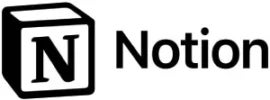
Notion is a project management platform and digital collaboration tool that is designed with creative and content teams in mind, so it makes sense that its AI add-on focuses on these tasks. Notion’s AI can help you summarize existing content, brainstorm new ideas, write a rough draft, fix spelling and grammar and even translate content into another language. The add-on costs $8 per person per month billed annually or $10 per person per month billed monthly in addition to the standard plans.
Pricing
- Free: No cost plan with limited features.
- Plus: $8 per user per month billed annually, or $10 per user per month billed monthly.
- Business: $15 per user per month billed annually, or $18 per user per month billed monthly.
- Enterprise: Custom quote.
Features
- Wiki and document creation.
- Customizable templates for different workflows.
- Multiple project views available.
- Simple and well-organized user interface.
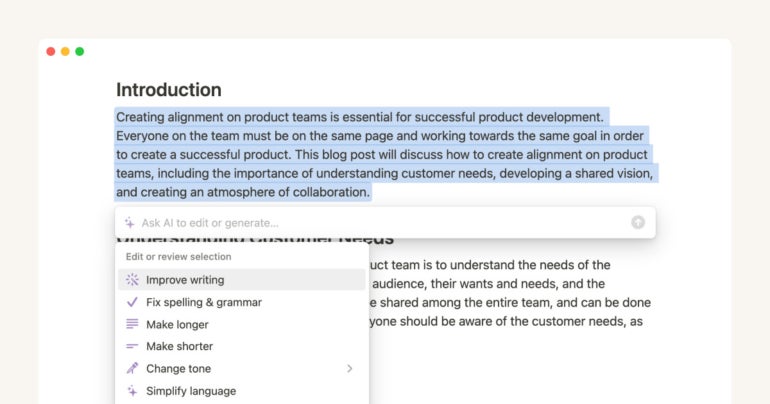
Pros
- Great note-taking capabilities.
- Excellent community support.
- Highly customizable layout.
- Up to 10 guests on the free plan.
Cons
- Offline use is extremely limited.
- No Gantt charts or time tracking.
- Only 5 MB file uploads on free plan.
- Not suitable for managing complex projects.
Top integrations
Notion’s top integrations are Google Drive, Slack, Typeform, GitHub and Trello.
Why I chose Notion
Notion came in handy with its writing assistance that’s significantly enhanced by Notion AI. It’s the best tool on this list for teams that rely heavily on documentation and content creation. Notion AI transforms the platform into an effective AI project management software by enabling users to organize notes, documents and projects more efficiently with artificial intelligence. Additionally, the integration of generative AI within Notion helps to streamline repetitive tasks and manage project data for content-centric workflows.
For more information, read the full Notion review.
Wrike: Best for unique AI features

Unlike some other platforms that require a paid add-on, Wrike’s AI features are included throughout the platform (though some features are only available on certain pricing plans). Wrike’s AI can help with more standard tasks like generating new ideas and finding spelling mistakes, but it can also help with more unique things like turning written documents into digital files and providing a 360-degree view of project risk factors.
Pricing
- Free: $0 per user per month.
- Team: $9.80 per user per month.
- Business: $24.80 per user per month.
- Enterprise: Quotes are available upon request.
- Pinnacle: Quotes are available upon request.
Features
- Subtask management included on all plans.
- Automations available on paid plans.
- Forecast and visualize project risk with the analytics tool.
- Resource management features available.

Pros
- Well organized and designed interface.
- Extremely powerful features and customizability.
- Premium security and data privacy features.
- Voice assistant interaction available on mobile app.
Cons
- Free plan limits the number of active tasks you can have.
- Team plan only supports up to 25 users.
- Must upgrade to Business plan for time tracking, template creation and AI risk prediction.
- Learning curve is very high compared to alternatives.
Top integrations
Wrike’s top integrations are Salesforce, Slack, Google Drive, Microsoft Teams and Dropbox.
Why I chose Wrike
Wrike intrigued me with its unique AI features, under the label Work Intelligence, that help teams edit and adapt existing work, give voice commands on the fly, transform notes into action items, convert written documents into digital files and make intelligent workflows, among other capabilities.
Wrike incorporates AI project manager functionalities that automate project planning and optimize workload distribution. It also delivers generative AI capabilities alongside these features to offer innovative solutions to complex project challenges.
For more information, read the full Wrike review.
Asana: Best for included AI features

Asana is in the process of adding AI functionality to its project management software. Right now, users get access to writing edits and summary generation. Meanwhile, comprehensive status updates and smart project answers are slated to be implemented by the end of the year. Some other forthcoming features include creating more effective goals and optimizing workflows over time. All of these AI features are included in other pricing plans and don’t require a separate fee.
Pricing
- Basic: $0 per user per month for up to 15 people.
- Premium: $10.99 per user per month billed annually, or $13.49 per user per month billed monthly.
- Business: $24.99 per user per month billed annually, or $30.49 per user per month billed monthly.
- Enterprise: Contact the sales team for a custom quote.
Features
- Five different project views.
- Workflow builder helps standardize task execution.
- Portfolios feature lets users customize and group projects.
- Advanced reporting and analytics.
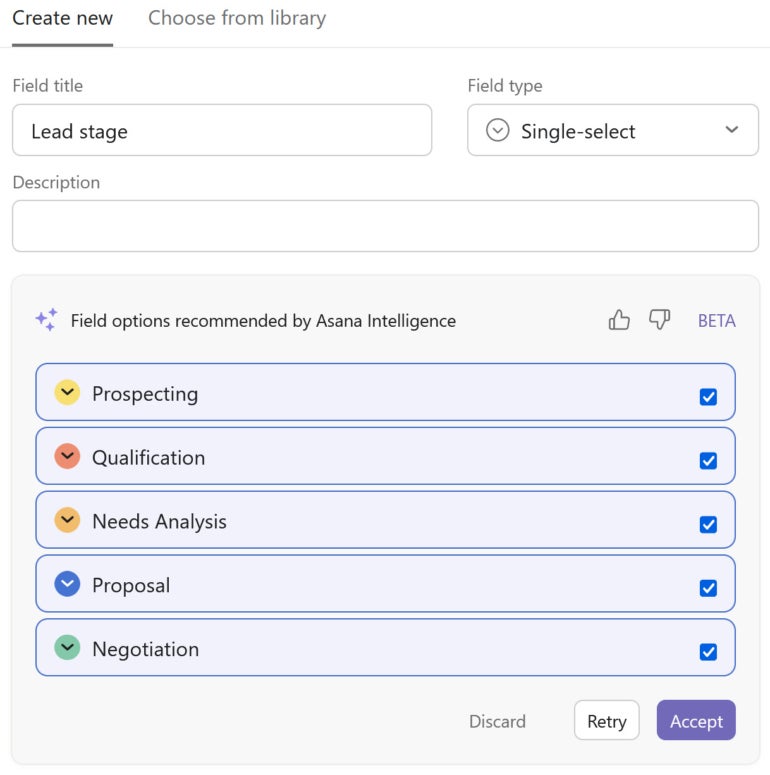
Pros
- Mobile app available for offline use.
- Easy-to-use management features.
- Free plan allows unlimited projects and tasks.
- AI functionality doesn’t require a separate fee.
Cons
- No native time tracking.
- Some AI features haven’t been implemented yet.
- Advanced security features only available on the Enterprise plan.
- Not suitable for projects with complex dependencies.
Top integrations
Asana’s top integrations include Slack, Microsoft Teams, Google Drive, Dropbox and GitHub.
Why I chose Asana
I shortlisted Asana for the comprehensive nature of the AI features included within Asana Intelligence. Asana’s approach to integrating artificial intelligence directly into its project management platform allows for smarter task categorization, predictive scheduling and automated workflow creation, distinguishing it from other tools with its depth of AI project management software capabilities.
The AI tools in Asana — such as smart summaries and action item extraction — give a seamless way to manage project data and ensure that teams can focus on high-impact work without getting bogged down by repetitive tasks.
For more information, read the full Asana review.
Microsoft Project: Best for Microsoft 365 users
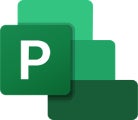
While Microsoft has been slowly embedding writing and editing AI features into its projects for years, it has a new project management focused feature called Copilot that is currently available as a “preview” for U.S. customers. Unfortunately, Copilot will come at a steep cost: Microsoft is going to charge $30 per user per month when it becomes widely available. Copilot can be used to generate task plans, assess potential risks, retrieve project status reports and provide assistance through a chat interface.
Pricing
Microsoft Project offers five total plans: three for the cloud-based subscription and two for the on-premise solution. A 30-day free trial is available for the cloud-based solution.
For cloud-based subscriptions:
- Project Plan 1: $10 per user per month.
- Project Plan 3: $30 per user per month.
- Project Plan 5: $55 per user per month.
For on-premises solutions:
- Project Standard 2021: $679.99 for a license for one PC.
- Project Professional 2021: $1,129.99.
Microsoft also offers a more flexible, scalable Project Server plan, but you must contact sales for a pricing quote.
Features
- Resource management capabilities included.
- Native time tracking included.
- Reporting feature is easy to use.
- On-premises deployment option.
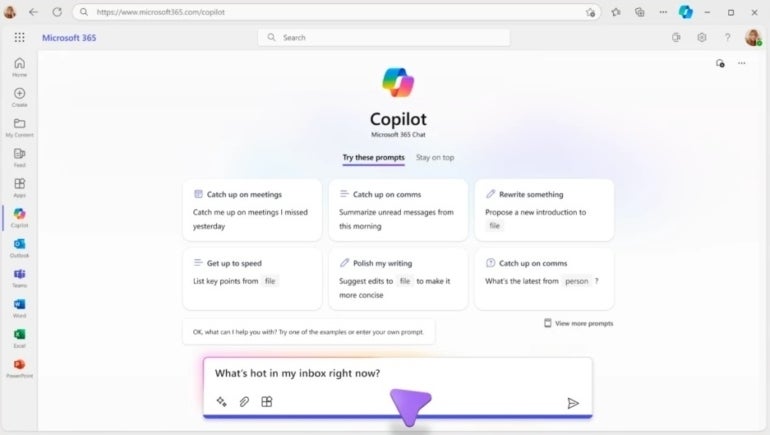
Pros
- Innovative AI features.
- Suitable for managing very long, complex projects.
- Interface will be familiar to Microsoft users.
- Excellent customer support and user forum.
Cons
- Unclear when Copilot will become widely available.
- Very expensive AI add-on.
- No native file management or team collaboration tools.
- Doesn’t integrate well with non-Microsoft products.
Top integrations
Microsoft Project’s top integrations are Microsoft Teams, Power BI, SharePoint, OneDrive and Azure DevOps.
Why I chose Microsoft Project
Microsoft Project seamlessly integrates with the Microsoft 365 suite, making it a strong choice for Microsoft 365 users. The platform’s use of AI technology, particularly through features like Copilot for project management, enhances task planning and resource allocation with artificial intelligence. This integration of AI tools into a familiar Microsoft environment enhances project workflows and data analysis.
For more information, read the full Microsoft Project review.
Zapier: Best for AI-enhanced automation

Zapier leverages AI to connect and automate tasks across thousands of apps, with features such as AI-powered troubleshooting and the ability to build no-code web apps with AI chatbots, enhancing its workflow automation capabilities. These features allow users to solve errors faster and create more intelligent, automated workflows.
Pricing
Aside from Zapier’s free plan, its tiered paid plans include:
- Starter: From $19.99 per month billed annually.
- Professional: From $49.99 monthly when billed annually.
- Team: From $69.99 per month when billed annually.
Features
- Automated workflows between over 3,000 apps.
- AI-powered troubleshooting for faster error resolution.
- No-code web apps and AI chatbots creation.
- Easy-to-create automated workflows.
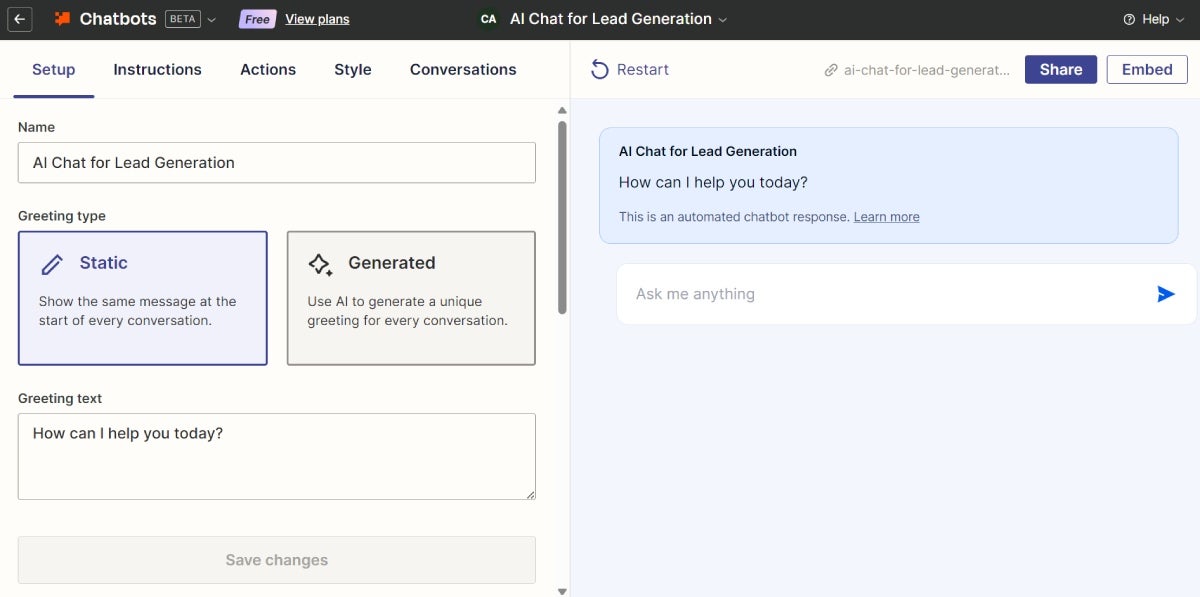
Pros
- Extensive app integration ecosystem.
- Powerful automation capabilities with AI insights.
- User-friendly platform suitable for non-technical users.
Cons
- Can become complex as workflows expand
- Higher-tier plans required for more advanced features
- Learning curve for initial setup.
Top integrations
Zapier’s top integrations are Google Sheets, Slack, Mailchimp, Trello and Salesforce.
Why I chose Zapier
I chose Zapier for its AI-driven approach to automation. It’s an indispensable tool for creating efficient workflows. The AI-powered troubleshooting and the ability to build no-code web apps with AI chatbots set Zapier apart, offering a level of automation that significantly reduces manual effort and greatly raises productivity.
Coda: Best for AI-driven document collaboration

Coda delivers a unique blend of traditional document tools with intelligent, interactive capabilities. It integrates AI to transform traditional documents into dynamic workspaces through features like AI chatbots and AI-powered fields in Tables, which allow for more intelligent data management and interaction within documents. This infusion of AI transforms documents from static files into dynamic workspaces that respond and adapt to user input and data changes.
Pricing
In addition to a free plan, Coda has three paid plans:
- Pro: $10 per user per month billed annually and $12 billed monthly.
- Team: $30 per user per month billed annually and $36 billed monthly.
- Enterprise: Contact for quote.
Top integrations
Coda’s top integrations are Slack, Google Calendar, Gmail, GitHub and Intercom.
Features
- Coda AI for idea generation and automating repetitive tasks.
- Dynamic documents that function like apps.
- AI chatbots for tailored responses.
- AI-powered fields in Tables for intelligent data management.

Pros
- Versatile document environment adaptable to many needs.
- AI features polish content creation and data analysis.
- Strong collaboration tools foster team engagement.
Cons
- Initial learning curve for new users.
- Performance can lag with very complex documents.
- Limited AI features in the free plan.
Why I chose Coda
Coda is a delight to use for document collaboration. The AI chatbots and AI-powered fields in Tables make it more efficient to handle data and collaborate. It also has a multitude of templates for various applications, which make workflows so much easier when paired with AI . Plus, it’s quite simple to create workflow rules and automate recurring tasks without having to write a single line of code.
For more information, read our full Coda review.
Benefits of AI tools for project management
The integration of AI into project management tools brings lots of advantages. Here are some of the top benefits.
Enhanced efficiency
AI tools automate and optimize many aspects of project management, from scheduling to resource allocation. This automation reduces the time spent on manual, mundane and repetitive tasks, allowing project teams to focus on strategic activities and creative problem-solving.
Improved decision-making
These tools enhance decision-making by providing data-driven insights and predictive analytics. They are capable of analyzing vast amounts of project data to forecast trends, identify risks and suggest actionable strategies, to enable decision-makers to make informed decisions quickly.
Streamlined communication
AI facilitates more efficient communication within teams by automating updates, reminders and reports. It can also analyze communication patterns to recommend improvements and make sure that all team members are aligned and informed.
Focus on high-value tasks
By reducing the administrative burden, AI allows project managers and their teams to concentrate on what matters: high-value tasks such as strategic planning, stakeholder engagement and creative solutions to project challenges.
Key features of AI project management tools
Writing and editing assistance
Writing and editing support is the most popular form of AI project management assistance right now. These AI features can help generate project summaries, write email drafts and edit reports for spelling errors, among other things. Some platforms go a step further and allow you to digitize handwritten files or translate one language to another.
Task and project management
As AI advances, more platforms are adding task and project management capabilities as well, but it’s still less common than writing and editing assistance. Depending on what project management tools you choose, the AI can help cross-tag projects, retrieve a project status, assess risk and generate project plans.
Automations
While automations aren’t technically AI, they are an important feature to look for in any project management software. Automations help users set up automatic workflows to eliminate redundant manual work and reduce human errors. Automations are becoming more widely available, but some software may cap the number of automations per account or only support certain types of automations.
Project views and templates
The best project management software should provide multiple project views to choose from as well as a library of templates, so you don’t have to build everything from scratch each time. The software should also give you the ability to create and save custom templates to suit your company’s unique needs.
Integrations
Integrations can significantly increase the functionality of any project management software. Integrations ensure that your data flows seamlessly from one platform to another and also add more features to your project management software. Some project management software offer native integrations, while others rely on third-party services like Zapier.
How do I choose the best AI project management tools for my business?
The availability and cost of AI features vary a lot from platform to platform. Some only offer writing and editing assistance, while others offer project and task management. Some charge an extra fee for AI functionality, while others limit certain features to certain pricing tiers. Other features may be limited to a restricted beta testing group or are otherwise not currently available to the public. Comparing the availability of AI features can help you narrow down your options considerably.
When choosing an AI project management tool, definitely take advantage of free trials in addition to demo calls with the sales team. Most of the platforms we included in this roundup also offer a forever free plan that allows for more extensive software testing, not limited by the days of a free trial. If you’re still unsure after testing the software out, opt for a month-to-month plan instead of a yearly one so you’re not locked into an annual contract if you need to switch later.
FAQs
How can I use generative AI in project management?
Generative AI can be used in project management to automate the creation of documents, generate project reports and even draft project plans. Tools like Notion AI can assist in creating project proposals and meeting summaries by simply inputting prompts, making project documentation and communication more efficient.
How can project managers leverage AI?
Project managers can leverage AI to streamline workflows, enhance cross-functional collaboration and support efficient communication. AI tools can automate routine administrative tasks and release project managers to focus on strategic decision-making, problem-solving and stakeholder management.
Methodology
To select the best AI project management tools, we consulted product documentation and user reviews. We consider factors such as pricing, free trials, availability of AI features, user interface design and customer support. We also consider features such as writing and editing assistance, risk factor assessment, project summary generation and project plan creation.

Ramona Emerson is a Diné writer and filmmaker originally from Tohatchi, New Mexico. He has a bachelor’s in Media Arts from the University of New Mexico and an MFA in Creative Writing from the Institute of American Indian Arts. After starting in forensic videography, she embarked upon a career as a photographer, writer, and editor. He is an Emmy nominee, a Sundance Native Lab Fellow, a Time-Warner Storyteller Fellow, a Tribeca All-Access Grantee and a WGBH Producer Fellow. In 2020, Emerson was appointed to the Governor’s Council on Film and Media Industries for the State of New Mexico. He currently resides in Albuquerque, New Mexico, where she and her husband, the producer Kelly Byars, run their production company Reel Indian Pictures. Shutter is her first novel